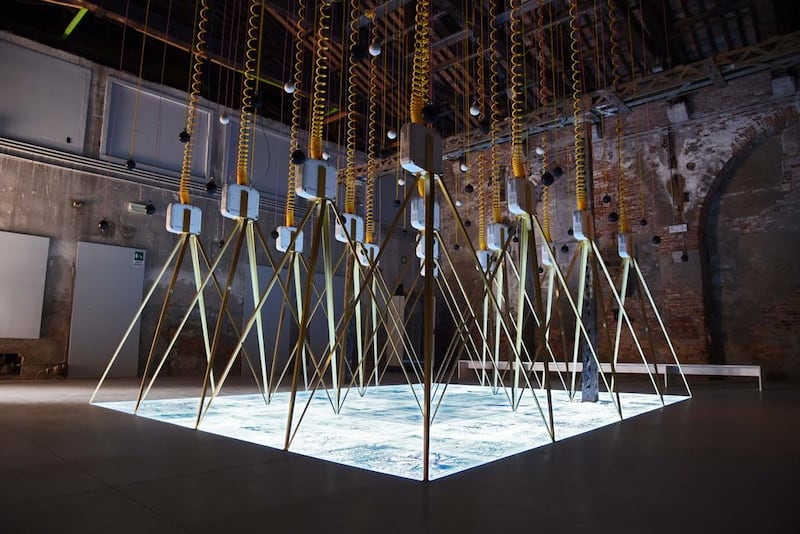Today, The Art Blog starts a regular series in collaboration with The National Pavilion of the UAE at the Venice Biennale. This year, it is the 15th International Architecture Exhibition, and 21 interns will travel to the Italian city between now and November, to spend a month manning the pavilion and exploring Venice. We have sent them on a reporting mission - to visit one national pavilion at the event and to send us back their experiences.
First up is Hayder Mahdi, an architect working in Abu Dhabi who has participated in designing small developments, educational institutions and large mixed-use projects. He visited the Irish Pavilion and brings us this fascinating report:
Titled Losing Myself, the exhibition at the Irish pavilion reflects on the fragmentary spatial experiences of people with dementia at the Alzheimer's Respite Centre in Dublin, Ireland. Affecting over 46 million people worldwide, Alzheimer's disease degenerates healthy brain tissues and causes a steady decline in one's memory: dementia. Vital mental functions such as memory, concentration, judgement and sensory abilities are severely affected. Patients can, consequently, suffer from cognitive impairment limiting their ability to orientate themselves and navigate through spaces.
The exhibition contrasts how architects draw and view a plan (floor layout) of a building with how patients of dementia would visualise its fragmented parts by presenting the floor layout as experienced in time rather than a static object. Hand sketching is employed as a tool to project how the mind wanders in the different spaces within the building.
At the centre of the pavilion, 16 projectors fixed on brass quad-pods project collectively a 16 minutes loop video representing a 24-hour cycle of intertwined time-based representations using sketches and digital overlays. Blurry hands representing 16 inhabitants of the building appear to draw distorted fragments of the floorplan as they cannot comprehend its totality. Colourful hexagonal grids are overlaid on the sketches representing the hexagonal neurons firing fields used in the brain when navigating or observing spaces. The multi-layered nature of the graphics allude a sense of spatial and emotional depth.
The rich visual experience is complemented by a notable sound environment. Keven Pollard, the sound designer, reflects on the fact that short memories fade much faster amongst people with dementia than older memories. Music and praying are perhaps the last things people remember as they are deeply embedded in their memories, dating back to their early childhood. Consequently, a great emphasis has been put on designing an immersive sound track. Snippets of Irish life blended with sound clips of the building, drawing noise and different soundtracks from Dublin are played from 64 suspended speakers. As visitors lean in over a specific part of the plan, a unique sound mix of casual daily conversation and activities that take place in that part of the building can be heard.
Without the use of a single wall, the Irish Pavilion provides an elegant and immersive spatial experience that is centred on the topic of cognitive impairment. Throughout my visit, I struggled to comprehend the overarching pattern or connect the different pieces of the plan together. Perhaps that is the exact subliminal message the exhibition wants to deliver. Hindered by memory loss and navigation difficulties, patients of Alzheimer’s fail to amalgamate their spatial experiences to visualize the space they are situated within – an experience which even architects fall short of designing for.
* Losing Myself is researched, designed and produced collaboratively by Niall McLaughlin and Yeoryia Manolopoulou.
To follow Hayder on social media use the hashtag @hayder.mahdi and keep up with all the interns in Venice on Instagram on @veniceinterns or under the hashtags #uaeinvenice and #veniceinterns










